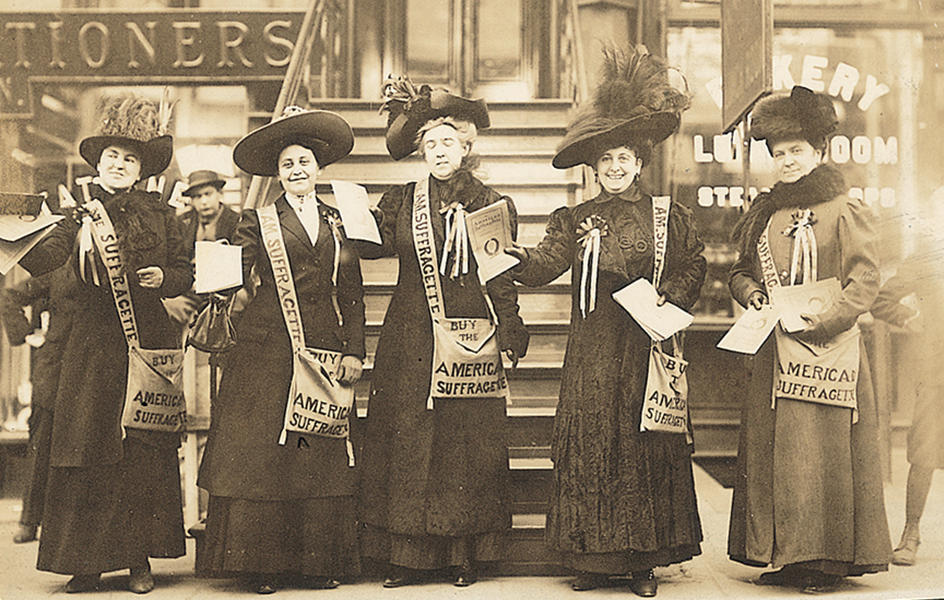Feminism << FEHM uh nihz uhm >> is the belief that women should have economic, political, and social equality with men. The specific ideas of feminism vary depending on time, place, culture, and other factors. Many feminists challenge traditional gender roles and demand increased educational and employment opportunities. Feminists may call for greater involvement of women in politics. They may also focus on issues related to sex and reproductive rights, the prevention of violence against women, and the well-being of women throughout the world.

Many people regard the emergence of feminism—and the resulting changes in the status of women—as a turning point in the history of society. Until the early 1900’s, women in most countries were denied the right to vote and to pursue their educational or career goals. Many societies expected women to devote their time to raising children, preparing food, and cleaning.
In the late 1600’s, the British author Mary Astell presented one of the first major arguments supporting improved education for women. Her work, A Serious Proposal to the Ladies, was published in two volumes, in 1694 and 1697. In A Vindication of the Rights of Woman (1792), the British writer Mary Wollstonecraft criticized the “state of degradation” in which society kept women, and she demanded better educational opportunities.
In the 1800’s, many women became active in social and political reform efforts, including antislavery movements. Such activity led many women to demand higher social status. The American antislavery leader Sarah M. Grimké wrote Letters on the Equality of the Sexes and the Condition of Woman (1838). She argued against religious leaders who claimed that the Bible supported the inferior position of women.
The word feminism comes from the French term feminisme, which was first used by French social reformers of the 1800’s. During the late 1800’s, the central goal of feminism was the right to vote, called suffrage. The International Council of Women, established in 1888, helped coordinate feminist efforts throughout the world. In 1893, New Zealand granted women the right to vote. Australia and many European countries followed during the early 1900’s. Women in the United States gained suffrage in 1920. See Woman suffrage.

After winning the right to vote, feminists began focusing on other issues. Margaret Sanger of the United States and Marie Stopes of the United Kingdom helped lead campaigns for birth control. Other feminists focused on job discrimination, wages, and other issues affecting women in the workplace. In the 1960’s, the civil rights movement and student protests led to increased political activism among a younger generation of women. The efforts of these women became known as the women’s liberation movement, or the “second wave” of feminism.
In 1966, the American feminist Betty Friedan helped found the National Organization for Women (NOW), a group dedicated to achieving equality between women and men. A similar organization, the National Action Committee on the Status of Women, was founded in Canada in 1971. In the late 1900’s, feminist publications such as Ms. magazine, cofounded in 1972 by Gloria Steinem, helped raise awareness of women’s issues. Many high schools, colleges, and universities began offering women’s studies courses that examined the achievements and experiences of women in various fields.
Since the late 1900’s, many activists have become known as “third wave” feminists, because their aims differ somewhat from those of earlier feminists. These activists increasingly apply feminist beliefs to issues relating to race and ethnicity, sexual orientation, social class, and role in government.
